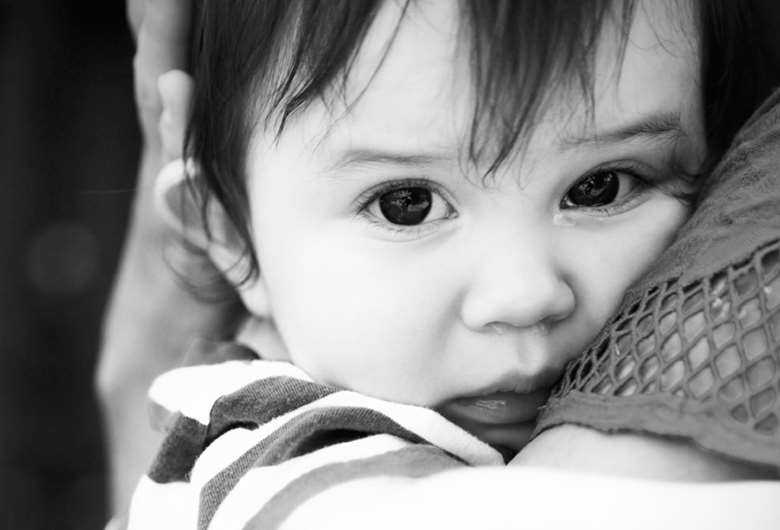Tool helps practitioners spot first signs of abuse and neglect
Monday, July 27, 2015
A new screening tool aims to make it easier for early years professionals to spot early signs of abuse and neglect in babies and toddlers.

It was developed by a Europe-wide team of childcare and psychology experts and is believed to be the first protocol of its kind designed specifically for those working with under-threes.
The tool is a series of questions for identifying families at risk or with established abuse and neglect problems, with measures specifically concerning under-threes.
The new tool, the INTOVIAN Protocol, has been developed and tested with nurseries and children's centres, and should be used alongside detailed guidance, which has also been published.
Recent World Health Organisation statistics suggest the incidence of child homicide among children and babies under four is more than double that of children aged five to 14.
According to child psychologist Professor Cecilia Essau from the University of Roehampton, the UK co-ordinator of the project, domestic violence affecting young children is rarely detected because children may have limited contact with others outside the family and incidents often occur in what is called the 'circle of trust'.
Department for Education data published last year shows that the number of children in need has risen by 5 per cent. Statistics show that of those children referred to social services, 50 per cent are referred because of child abuse and neglect.
Professor Essau said the majority of referrals are carried out by the police. But she added that, 'Nursery workers and children's centre staff should be able to pick this up.'
The average number of working days for social services to complete a care assessment is 30 days, 'which is far too long to identify a child. You need a screening tool to pick up core symptoms to signpost for more detailed assessment'.
As part of their EU-funded project, Professor Essau and her project partners in five other EU countries ran workshops with professionals working with under-fives to develop the tool and tested it with nurseries and children's centres. 'We wanted to make sure it was feasible to use in a setting,' she said. 'It was very important to hear what professionals thought about it.'
When developing the tool, the researchers observed different groups of parents interacting with their children, including vulnerable people, such as teenage parents, those who had experienced domestic violence, and parents with mental health problems.
The checklist and supporting guidance include a series of five detailed questions, which professionals can use to assess a child if they have concerns, based on their observations.
They help nursery staff to become more aware of the signs of neglect and abuse, which could signpost a need for a more comprehensive assessment.
For example, one question asks: 'Are there any other signals that make you doubt the physical safety of the infant/toddler?'
Professor Essau explained that as part of the normal rough-and-tumble of everyday life children will have cuts and bruises from moving around and playing, depending on their stage of development. 'Certain things are not normal, for example, different types of bruises,' she added.
The guidelines explain what professionals might need to look at more carefully, in the context of the question. Possible indicators of physical abuse, which should be considered in the context of the question, and are given as examples, include bruising in or around the mouth, which could be an indication of force-feeding.
'Neglect is a tricky one' - but rashes and wet nappies could be a sign, as could children wearing clothing that is the wrong size, or for the wrong time of year, and persistent infections.
While the protocol refers to health and social care workers, Professor Essau said that 'staff who have been trained in education and who work in nurseries and children's centres are the ones who will be in a better position to pick up signs of child neglect (because it is more long-term). Staff in health and social services will more likely pick up the child abuse.'
Some of the nurseries and children's centres in Roehampton are going to use the tool routinely and the hope is that more settings will do so. Professor Essau is keen to make the tool more freely available and is offering free training sessions with early years staff who wish to implement the tool in their setting.
QUESTIONS TO IDENTIFY AFFECTED CHILDREN
Recognising child abuse and neglect can be difficult, and should involve careful listening and observation.
To get the whole picture of the child, and his/her nurturing environment, you will need to put together information from many sources, including: 1. Developmental and medical history 2. Previous or current reports of abuse and neglect from a third party 3. Child's appearance and behaviour 4. Physical signs or symptoms 5. Interaction between the caregiver and the infant or toddler.
The questions
1. In the case of noticing a physical trauma/mark or being informed about an accident: a) Is the caregiver's story consistent? b) Could the accident/physical trauma have been avoided or prevented with age-appropriate supervision?
2. Is the caregiver-infant/toddler interaction characterised by(a, b and c are not mutually exclusive):
a)anger and hostility? b) coldness and/or detachment? c) tension and/or excessive anxiety?
3. Does the caregiver handle the infant/toddler in a physically rough and/or harming way?
4. Are there any other signals that make you doubt: a) the physical safety of the infant/toddler? b) the emotional safety of the infant/toddler?
5. Is there any other risk factor that makes you doubt the safety and/or the appropriateness of care for this infant/toddler?
Contact c.essau@roehampton.ac.uk for information and for a copy of the INTOVIAN Protocol




